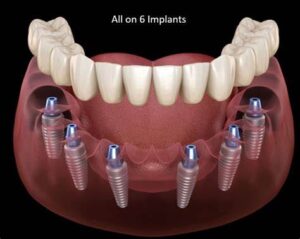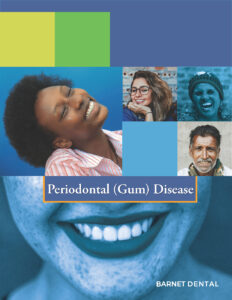Emergency Dental Care of New York
Contact
Hours
- Monday: 9:00am – 9:00pm
- Tuesday: 9:00am – 6:00pm
- Wednesday: 9:00am – 9:00pm
- Thursday: 9:00am – 9:00pm
- Friday: 9:00am – 5:00pm
Emergency Dental Care, located in the bustling city of New York, New York, is your trusted provider of urgent dental services when unexpected dental issues arise. Dedicated to providing prompt relief and comprehensive care for dental emergencies, our practice offers a wide range of immediate treatment options in a welcoming and comfortable environment. Led by a team of experienced emergency dentists, Emergency Dental Care is committed to restoring your oral health and relieving your discomfort as quickly as possible.
Urgent Dental Services
Emergency Examinations
- Immediate Assessments: Thorough evaluations to diagnose and address dental emergencies promptly.
- Pain Management: Quick relief from dental pain through effective anesthesia and pain management techniques.
Emergency Dental Treatments
- Emergency Extractions: Prompt removal of severely damaged or infected teeth causing acute pain or discomfort.
- Emergency Root Canal Therapy: Expedited root canal treatment to alleviate pain and save infected teeth.
Immediate Care
Same-Day Appointments
- Flexible Scheduling: Accommodating same-day appointments for patients in need of urgent dental care.
- Walk-In Services: Convenient walk-in availability for immediate assessment and treatment of dental emergencies.
Efficient Treatment
- Rapid Response: Prompt attention from skilled emergency dentists to address urgent dental needs without delay.
- Streamlined Procedures: Expedited processes to minimize waiting times and efficiently manage dental emergencies.
Patient Care
Compassionate Approach
- Empathetic Staff: Compassionate and understanding dental professionals dedicated to providing comfort and support during stressful situations.
- Clear Communication: Transparent communication about treatment options, costs, and expectations to empower patients to make informed decisions about their dental care.
Aftercare Support
- Post-Treatment Guidance: Detailed instructions and guidance on post-procedure care and pain management to promote optimal healing and recovery.
- Follow-Up Care: Scheduled follow-up appointments to monitor progress, address any concerns, and ensure the successful resolution of dental emergencies.
Bone Grafting
Bone grafting is a surgical procedure used to augment or replace bone that has been lost or damaged due to trauma, disease, or other factors. It is commonly performed in dentistry, orthopedics, and reconstructive surgery to regenerate bone tissue and promote healing in areas where bone deficiency or defects are present. In dentistry, bone grafting is often used to enhance the stability and support of dental implants, treat periodontal disease, or repair defects in the jawbone. Here's an overview of bone grafting and its applications in dentistry:
- Purpose of Bone Grafting:
- Bone grafting is performed to stimulate bone growth, fill in bone defects or voids, and provide structural support in areas where bone volume or density is insufficient. The procedure helps restore the natural architecture and function of the bone, creating a suitable foundation for dental implants, prosthetics, or other dental restorations.
- Types of Bone Grafts:
- There are several types of bone grafts used in dentistry, including:
- Autogenous Grafts: Autogenous bone grafts, also known as autografts, involve harvesting bone tissue from the patient's own body, typically from the jaw, hip, or tibia. Autografts are considered the gold standard for bone grafting procedures because they offer excellent biocompatibility, osteogenic potential, and minimal risk of immune rejection.
- Allogeneic Grafts: Allogeneic bone grafts are derived from human cadaveric donors and processed to remove cellular components while preserving the bone's structural integrity. These grafts are readily available and eliminate the need for additional surgical sites, but they carry a slight risk of disease transmission and may require additional processing to ensure compatibility.
- Xenogeneic Grafts: Xenogeneic bone grafts are sourced from non-human animal donors, such as bovine (cow) or porcine (pig) sources. These grafts are treated to remove antigenic materials and sterilized to reduce the risk of immune rejection and disease transmission. Xenogeneic grafts provide an alternative option for patients who cannot undergo autogenous grafting or prefer non-human-derived materials.
- Synthetic Grafts: Synthetic bone grafts are composed of biocompatible materials, such as calcium phosphate ceramics or bioactive glass, designed to mimic the properties of natural bone and promote new bone formation. Synthetic grafts offer the advantage of predictable resorption rates, unlimited availability, and reduced risk of disease transmission, but they may not possess the same osteogenic potential as natural bone grafts.
- Indications for Bone Grafting:
- Bone grafting may be indicated in various dental procedures, including:
- Dental Implant Placement: Bone grafting is often performed prior to or during dental implant surgery to augment the jawbone and provide adequate support for implant placement. Grafting may be necessary in cases of bone resorption, inadequate bone volume, or anatomical defects that compromise implant stability and longevity.
- Ridge Augmentation: Ridge augmentation procedures involve adding bone graft material to the alveolar ridge (jawbone) to correct deficiencies in bone volume, width, or height. These procedures are commonly performed to enhance the aesthetics and function of the jawbone in preparation for dental implant placement or prosthetic rehabilitation.
- Socket Preservation: Socket preservation is a preventive bone grafting procedure performed immediately following tooth extraction to preserve the natural bone structure and prevent bone loss or resorption. Grafting materials are placed within the extraction socket to fill the void and maintain the surrounding bone volume, facilitating future implant placement or prosthetic restoration.
- Bone Grafting Procedure:
- The bone grafting procedure typically involves several steps, including:
- Preoperative Evaluation: The patient undergoes a thorough clinical and radiographic examination to assess the extent of bone loss or defects and determine the most appropriate treatment plan.
- Graft Material Selection: The dentist selects the most suitable graft material based on the patient's needs, anatomical considerations, and treatment goals.
- Graft Placement: The graft material is placed into the desired site using surgical techniques, such as guided bone regeneration (GBR), bone expansion, or sinus lift procedures. The graft is secured in place and covered with a protective membrane or barrier to promote healing and prevent soft tissue invasion.
- Healing and Integration: Over time, the graft material integrates with the surrounding bone tissue through a process called osseointegration, forming a stable, functional bone matrix. The patient undergoes regular follow-up visits to monitor healing progress and assess treatment outcomes.
- Postoperative Care and Recovery:
- Following bone grafting surgery, patients are provided with postoperative instructions and guidelines to promote healing and minimize complications. This may include:
- Pain Management: Patients may experience mild discomfort or swelling after surgery, which can be managed with over-the-counter pain medications and cold compresses.
- Oral Hygiene: Patients are instructed to maintain good oral hygiene practices, including gentle brushing and flossing, to keep the surgical site clean and free of debris.
- Dietary Restrictions: Patients may be advised to follow a soft diet and avoid hard, crunchy, or spicy foods that could irritate the surgical site or disrupt healing.
- Activity Modification: Patients should avoid strenuous physical activities, smoking, and excessive alcohol consumption during the initial healing period to promote optimal recovery and minimize complications.
- Long-Term Outcomes:
- The success of bone grafting procedures depends on various factors, including the quality and quantity of bone graft material, the patient's overall health, and adherence to postoperative care instructions. With proper treatment and follow-up, bone grafting can significantly improve bone volume and density, enhance oral function, and facilitate the success of subsequent dental procedures, such as dental implant placement or prosthetic rehabilitation.
In summary, bone grafting is a valuable surgical technique used in dentistry to restore bone volume, support
All-on-6 Dental Implants
"All-on-6" dental implants are a type of full-arch dental restoration that is supported by six dental implants strategically placed in the jawbone to support a fixed prosthesis. This treatment concept is similar to the "All-on-4" and "All-on-8" dental implant procedures but involves the placement of six implants per arch (either upper or lower) to provide stability and support for the restoration.
Here's an overview of the All-on-6 dental implant procedure:
- Evaluation and Treatment Planning:
- Before undergoing All-on-6 dental implant treatment, the patient will undergo a comprehensive dental examination, including clinical assessment and radiographic evaluation (such as dental X-rays or CBCT scans).
- The dentist or oral surgeon will assess the patient's oral health, bone density, and suitability for implant placement.
- A detailed treatment plan will be developed based on the patient's individual needs and goals.
- Implant Placement:
- The first step in the All-on-6 dental implant procedure involves surgically placing six dental implants into the jawbone at strategic locations to support the full-arch restoration.
- The number and position of the implants may vary depending on factors such as bone quality, anatomy, and the specific requirements of the case.
- Implant placement is typically performed under local anesthesia or sedation to ensure the patient's comfort during the procedure.
- Healing and Osseointegration:
- After implant placement, a healing period of several months is usually required to allow for osseointegration to occur.
- During this time, the implants fuse with the surrounding bone tissue, becoming firmly anchored in the jawbone.
- Temporary restorations may be placed during the healing period to maintain aesthetics and function.
- Restoration:
- Once osseointegration is complete, the dental implants are ready to support the full-arch restoration.
- A custom-made fixed prosthesis, typically made of high-quality dental materials such as porcelain or acrylic, is fabricated to fit securely over the implants and restore function and aesthetics.
- The prosthesis is attached to the implants using special abutments or connectors, providing stability and support for chewing and speaking.
- Postoperative Care and Maintenance:
- After the All-on-6 dental implant restoration is placed, the patient will receive instructions on postoperative care and maintenance.
- Regular dental check-ups and professional cleanings are essential to monitor the health of the implants and surrounding tissues.
- Good oral hygiene practices, including brushing, flossing, and using antimicrobial mouthwash, are important for long-term success.
All-on-6 dental implants offer several advantages over traditional removable dentures, including improved stability, function, and aesthetics. With proper care and maintenance, an All-on-6 dental implant restoration can provide long-lasting and natural-looking results, enhancing both oral health and quality of life. If you are considering All-on-6 dental implant treatment, it's important to consult with a qualified dental professional to determine the best treatment plan for your individual needs.





